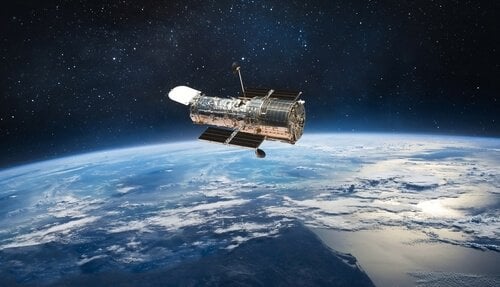So, What Is The Big Bang Theory?
- Replies 0
Note from the Editor:
This article was kindly written for the SDC by member @Doctor Alan.
The Steady State Theory
When I was at school, we were taught that the Universe was in a ‘Steady State’. Nothing would ever change, at least in the state of the solar system and the way our planet had become habitable. This was called the ‘Steady State Theory’, and according to Britannica, the theory was first put forward in 1948 by British scientists Sir Hermann Bondi, Thomas Gold, and Sir Fred Hoyle. It was a very comforting theory, to my mind, and we were secure in the knowledge that everything had ‘always been here’ and would stay.
Of course, it was those same school days that allowed us to believe that ‘Elements could neither be created nor destroyed’ – all 92 of them, at the time. How wrong that bit of knowledge was!
What was wrong with the Steady State Theory?
The Steady State theory recognised that the Universe was expanding. In itself, this does not contradict the Steady State Theory, since it allows that even though the Universe is always expanding it maintains a constant average density, with matter being continuously created to form new stars and galaxies at the same rate that old ones become unobservable due to their distance.
The expansion of the Universe has been known since 1929, when Edwin Hubble provided observational evidence that the Universe is expanding by measuring the ‘red shift’ of stars. This is similar to the ‘Doppler’ effect when sound appears to be at a higher frequency when a noisy object approaches you, and from the frequency as it recedes. The ‘red’ end of the spectrum has a longer wavelength than the ‘blue’ end, so if stars are seen with this predominant ‘red’ colour, then the star is moving away.
Hubble published a paper demonstrating a relationship between the distance of galaxies and their recession velocity, now known as Hubble's Law. In this way, he showed that the Universe is not static but is, in fact, expanding in all directions.
Despite attempts by Fred Hoyle to refute the evidence, it was the observations since 1950 of the ‘cosmic wave background’ and other evidence that contradicted the Steady State theory and led to the almost overwhelming acceptance of the Big Bang Theory.
Lorem ipsum dolor sit amet, consectetur adipiscing elit. Quisque in diam id erat facilisis consectetur vitae vel urna.
Ut lacus libero, suscipit auctor ipsum sit amet, viverra pretium nisl. Nullam facilisis nec odio nec dapibus. Integer maximus risus et velit porttitor ullamcorper
Read more for FREE!
Become a member today and join over 200,000 Australians already taking advantage of daily news, weather, petrol costs, games, jokes, deals and more.
-
FREE 400-page Discount eBook upon joining
-
FREE Aussie-made eBook & many more
-
Multiple daily discounts for members
-
No payment required
Register Faster Using
Or Register with email
Already a member?








